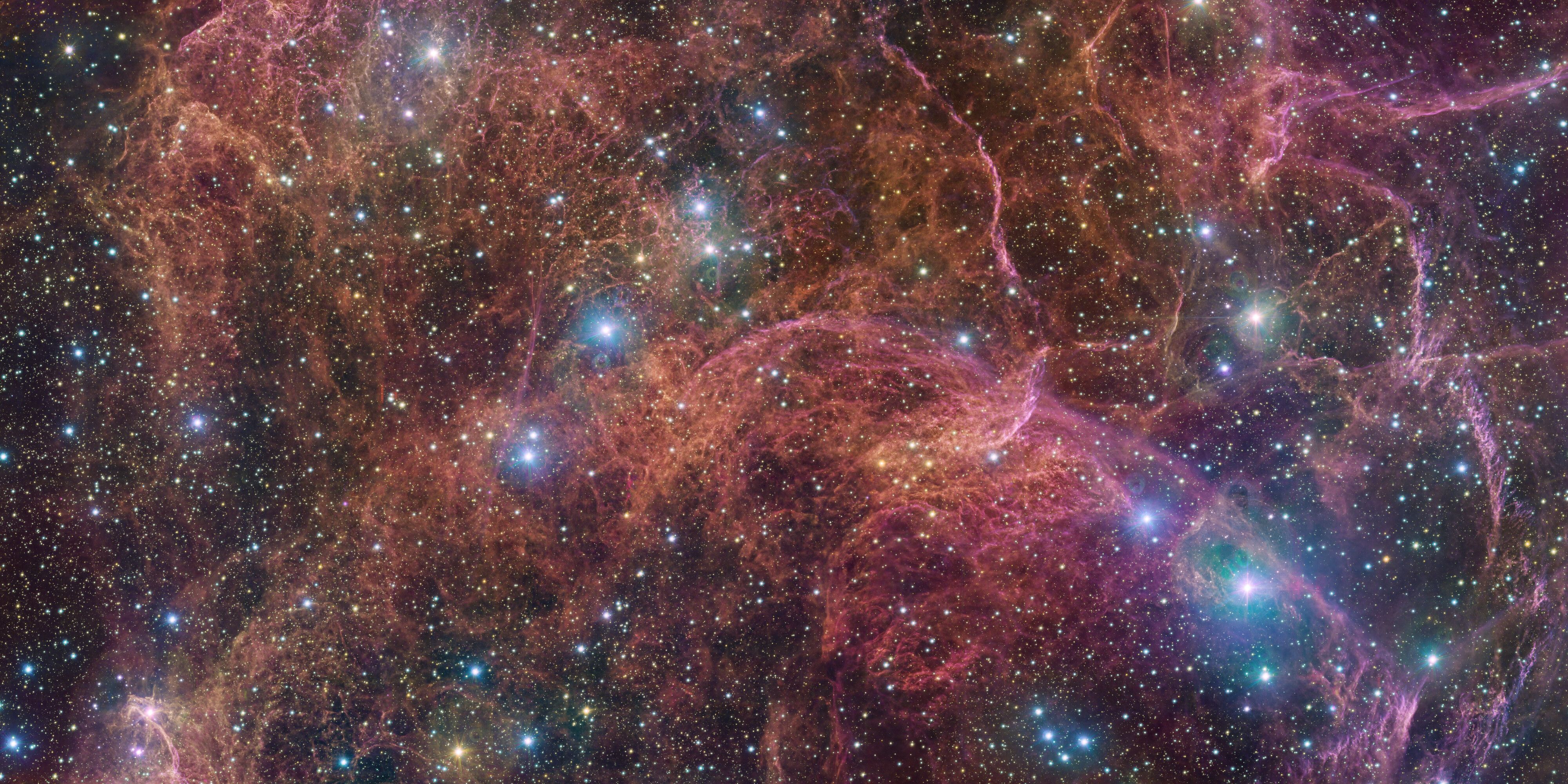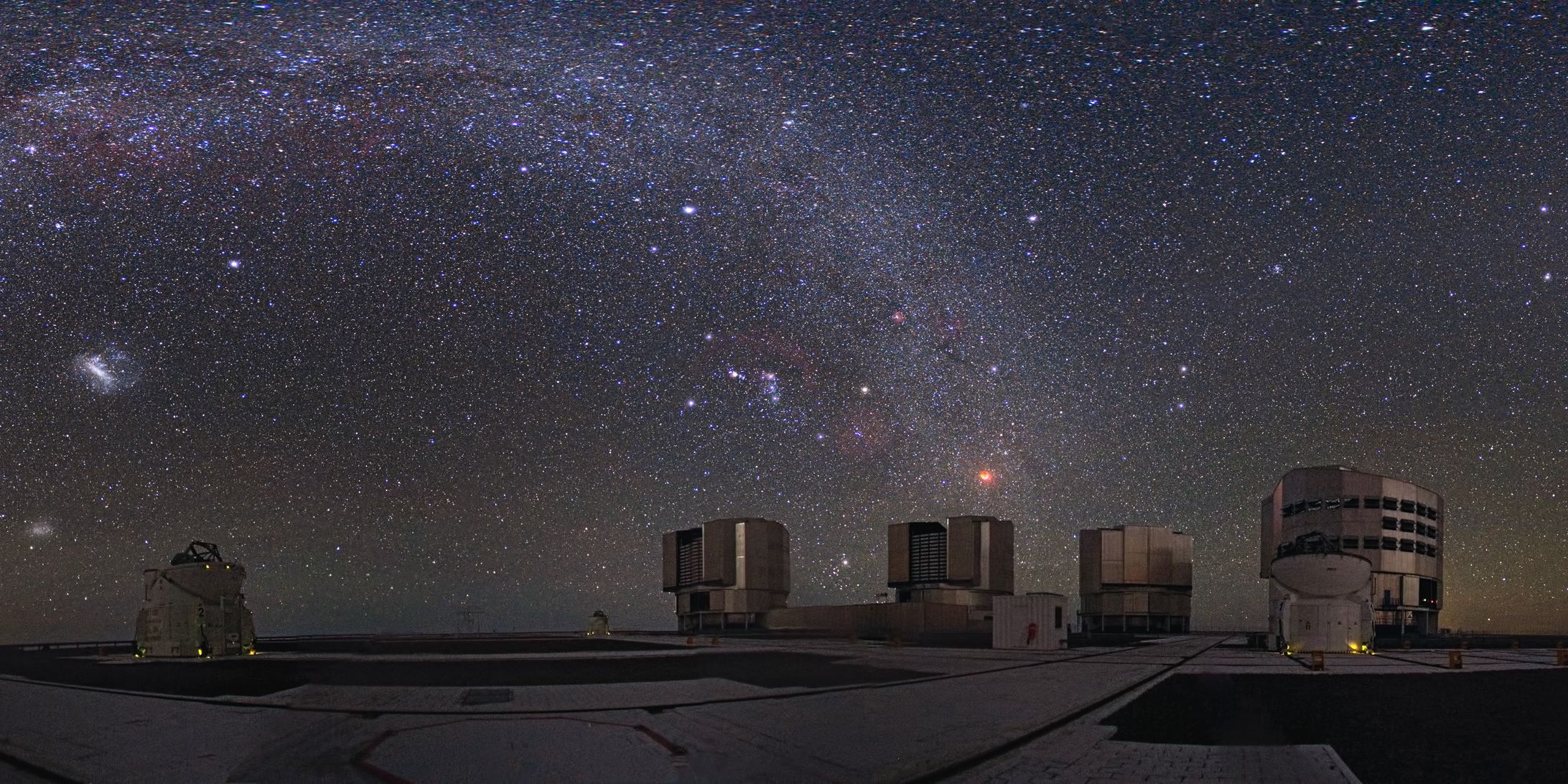A new image of the aftermath of a supernova shows glowing tendrils reaching through space like an alien's tentacles. Named Vela (The Sails), the spectacle is only 800 light-years away from Earth, making it one of the nearest known supernova remnants. Stars are regularly going supernova across the universe, but it has been more than 400 years since one was observed in the Milky Way galaxy. Observing the residual effects of long-ago supernovae, like Vela, offer scientists unique insight into how such celestial events play out.
Stars are held together by two competing forces. The nuclear fusion reaction at a star's nucleus exerts a powerful outward pressure. Simultaneously, the star's gravitational pull is constantly compressing the star's mass. As some stars burn out, the external pressure from the core weakens, and in an instant, all semblance of balance is lost. Within the time span of about 100 seconds, gravity collapses the star's core, sending shockwaves rippling outward through the universe and exploding the star's outer layers. The remnant of a supernova looks different depending on the star itself. Supernovae of massive stars can leave behind black holes, while others leave dense neutron stars and new nebulae or clouds of gas.
The new image, released by the European Southern Observatory (ESO), was created at the Paranal site in Chile and is a high-resolution mosaic of photos of the Vela supernova remnant. The remnant resembles a stellar sunset, hewn in luminous pink and orange. The spider web structure is made of cosmic gas and dust, not unlike the Pillars of Creation, although the two celestial features have significant differences. The Vela remnant is the result of an explosion that took place roughly 11,000 years ago. As the shock waves emanated from the explosion, they passed through the surrounding gas, reforming it and heating it, increasing its luminosity. The image reveals only part of the remnant, but even the fragment depicted could contain nine Earth Moons.
A Powerful Terrestrial Telescope
The new image was created from observations taken with ESO's VLT Survey Telescope (VST) in Chile. The telescope is one of the world's most advanced optical telescopes, and it has surveyed the night sky using visible light for more than seven years. While space telescopes, like Hubble and Webb, have dominated recent headlines, discoveries like this one from terrestrial telescopes emphasize their unique advantages. Because the VLT is Earth-based, it can be updated and maintained more efficiently than its in-orbit counterparts, and there are fewer opportunities for technological failure. As a result, the VLT has mapped much of Earth's galaxy and is even credited with capturing the first image of an extrasolar planet.
Although the European Southern Observatory already operates numerous observatories worldwide, they are building an even larger telescope near the VLT, which will be known as the Extremely Large Telescope, "the world's biggest eye on the sky." At a time when many Earth-based observatories are under environmental threat, the construction of a new one is objectively thrilling. The Extremely Large Telescope is expected to come online in 2027. In the meantime, observers can enjoy the golden age of telescopes, as stellar Earth observatories, along with their in-space counterparts, continue to examine the cosmos.
Source: ESO


